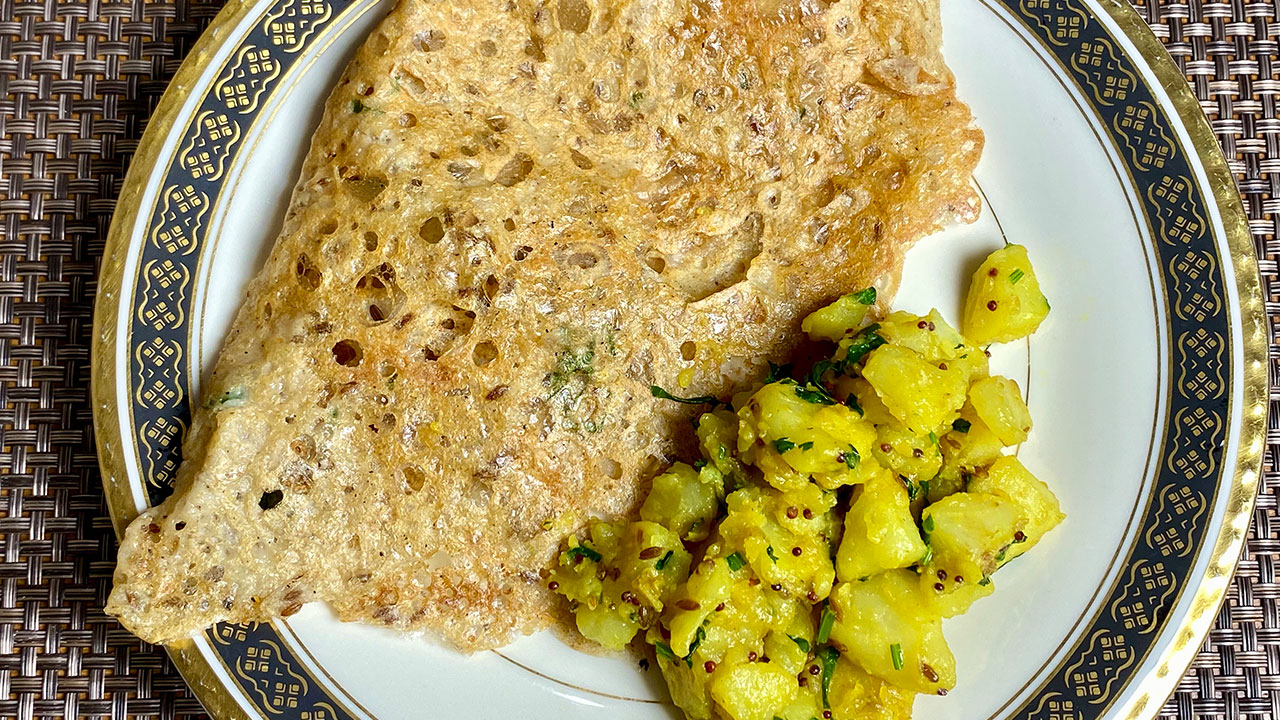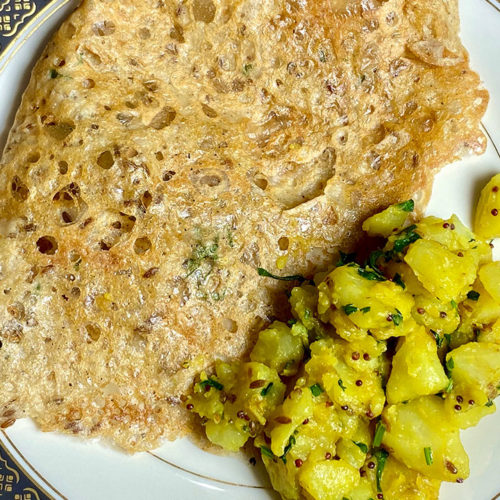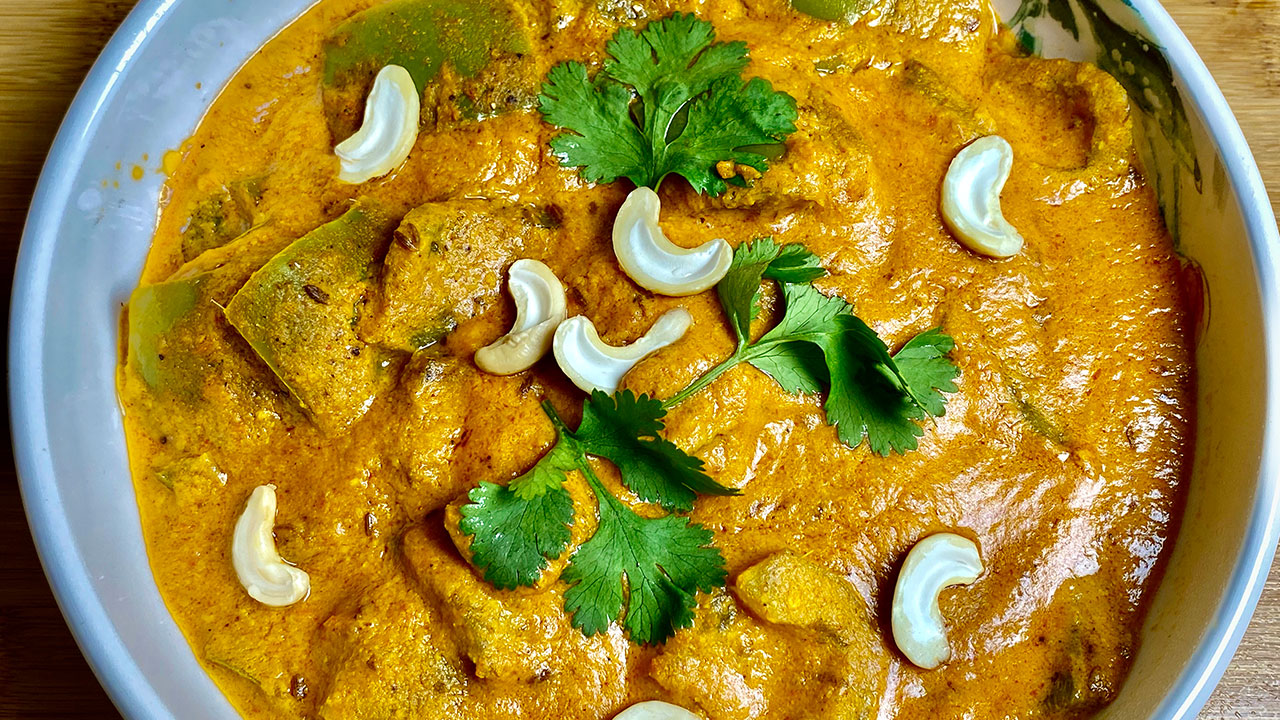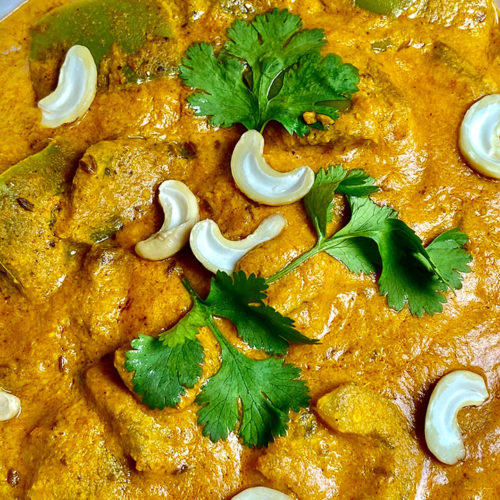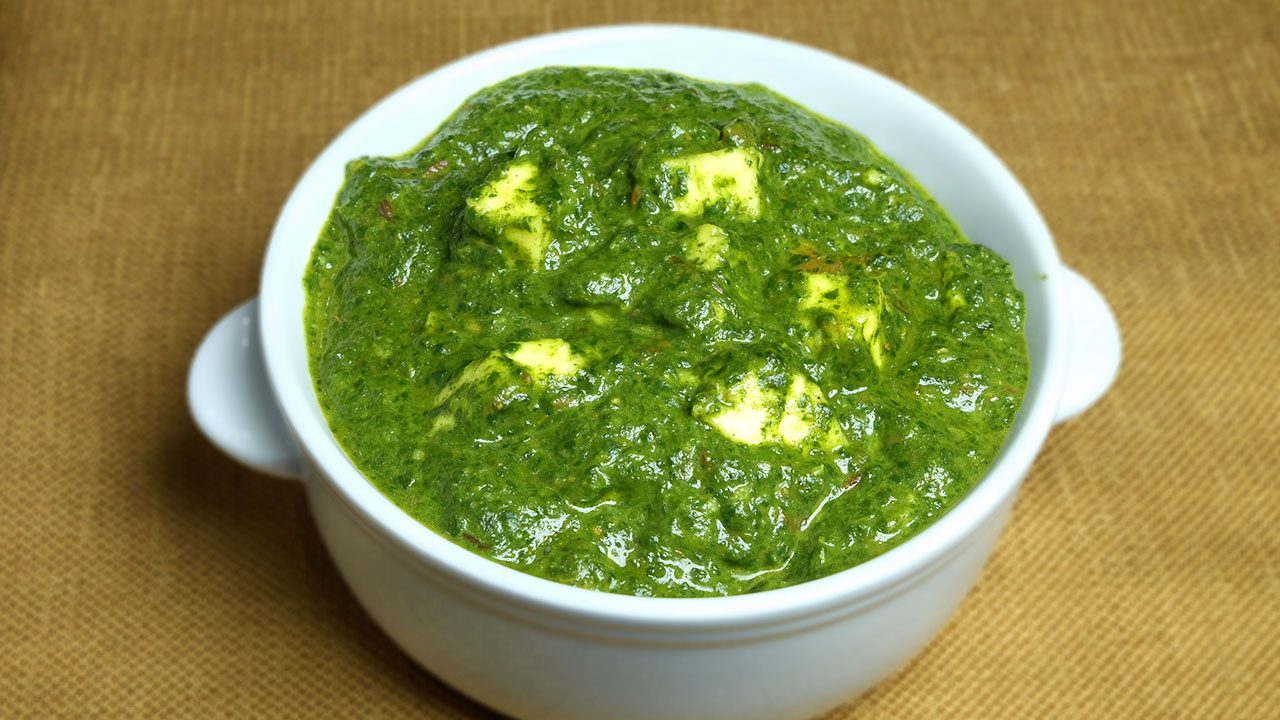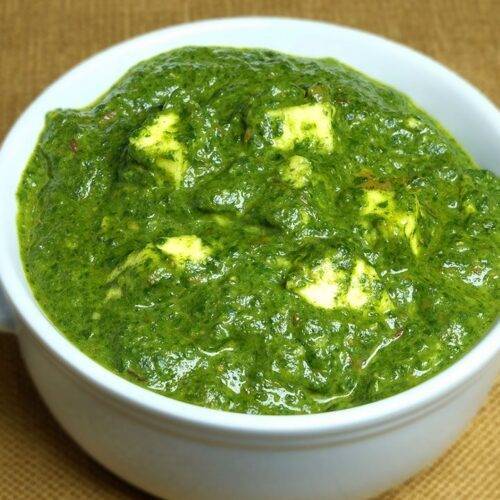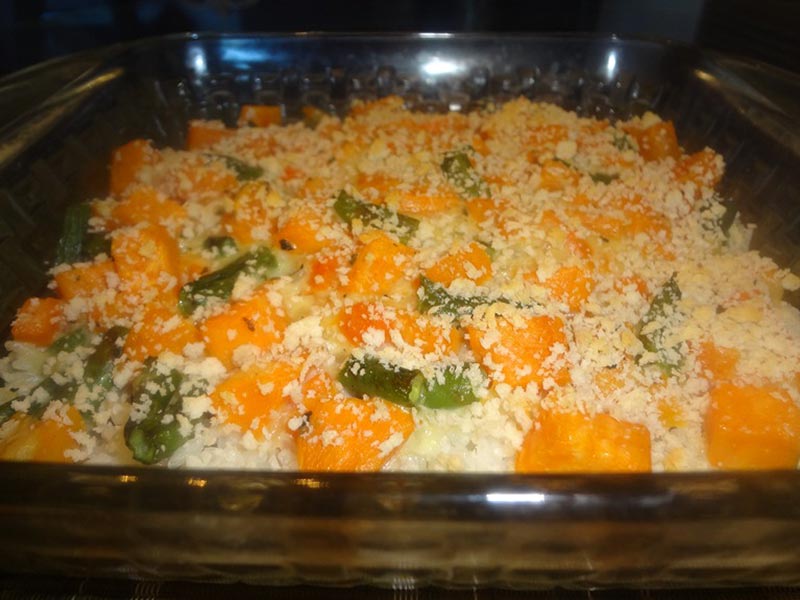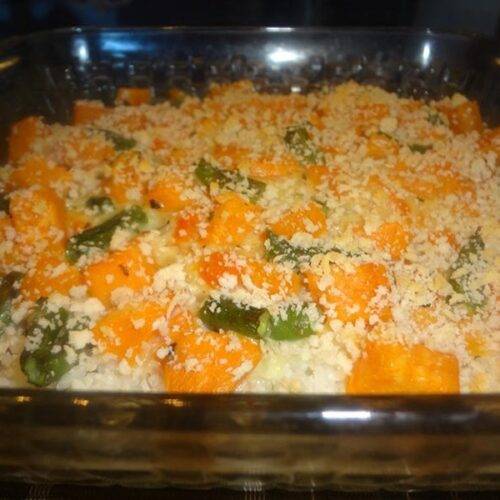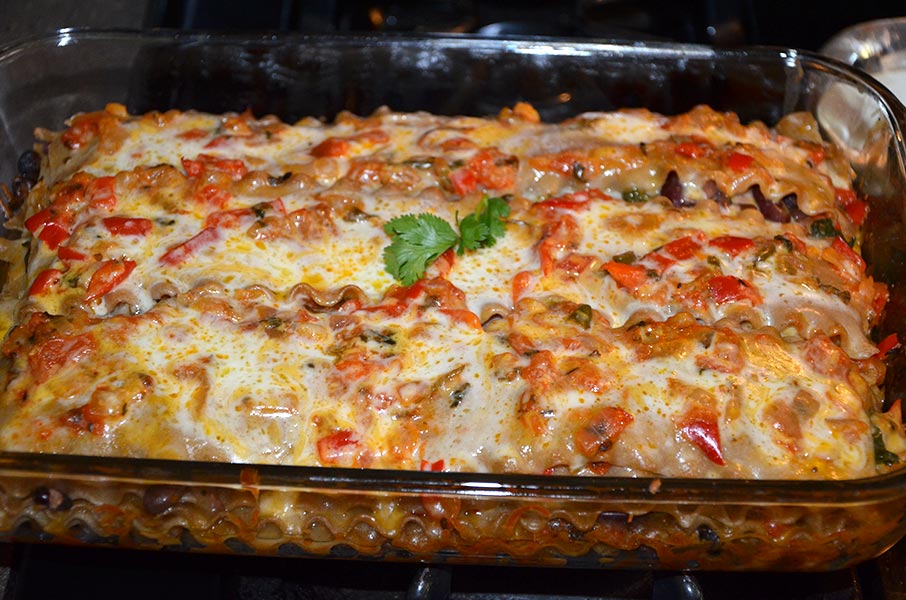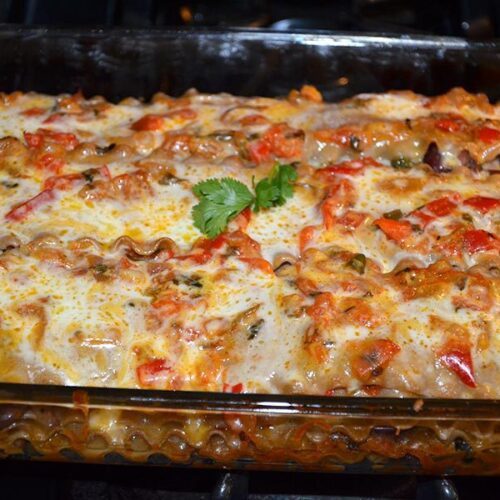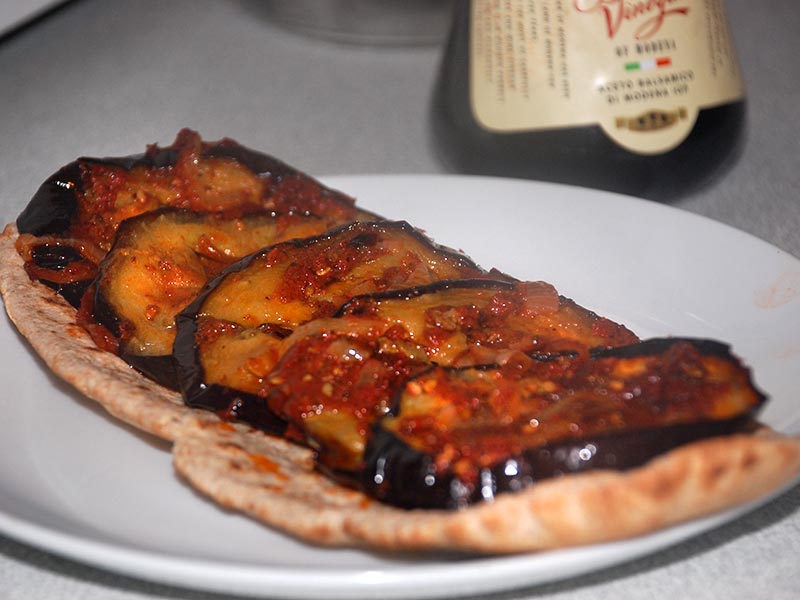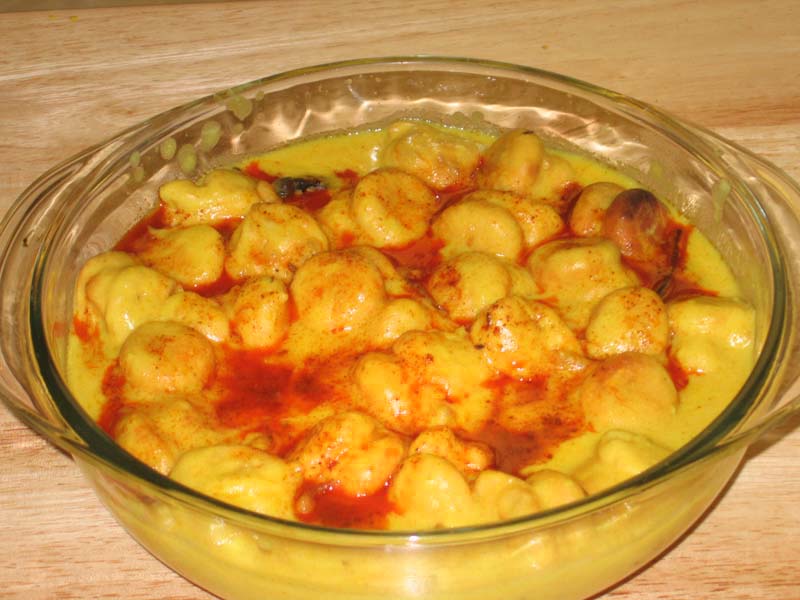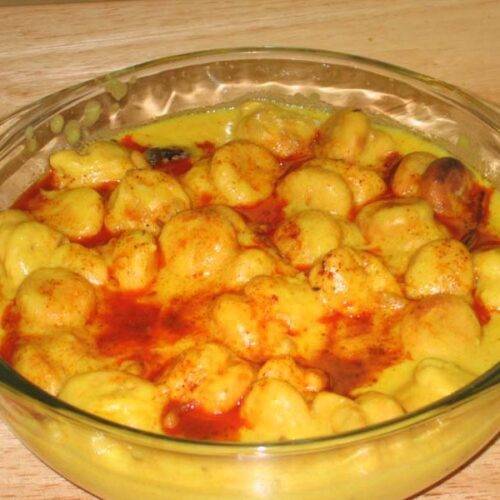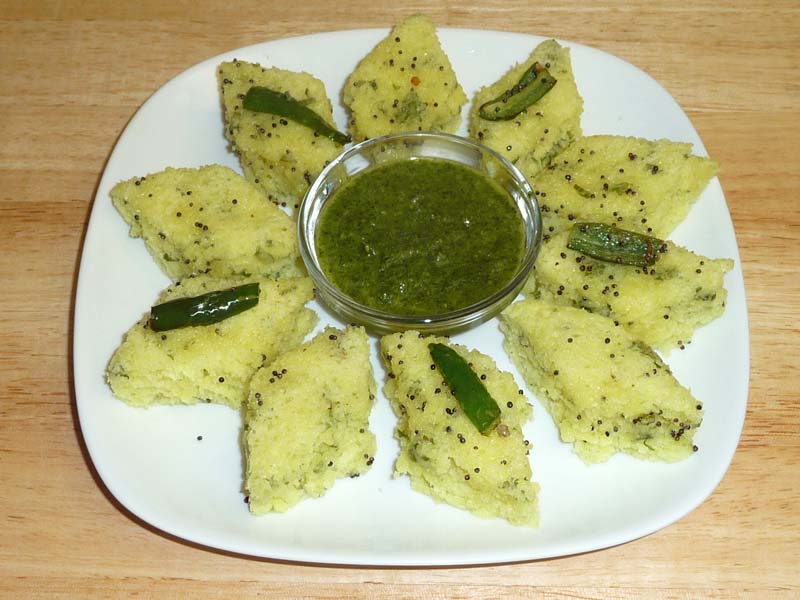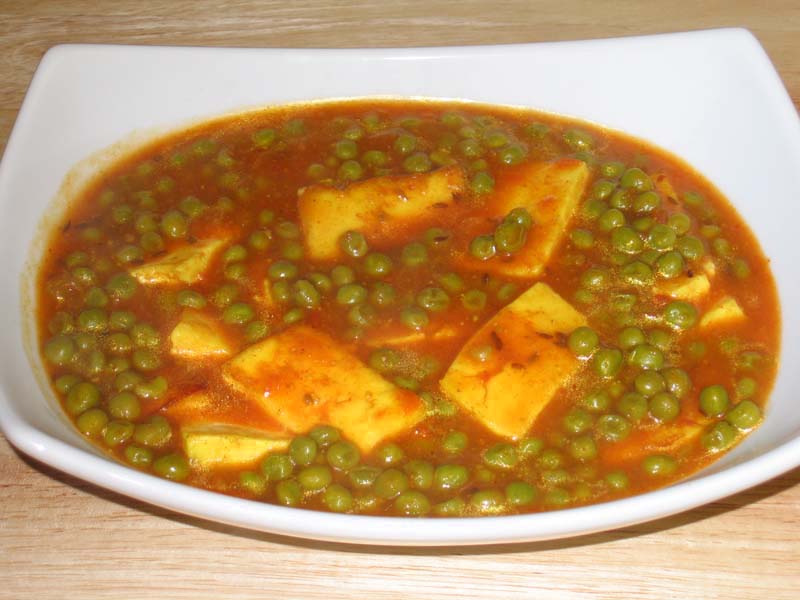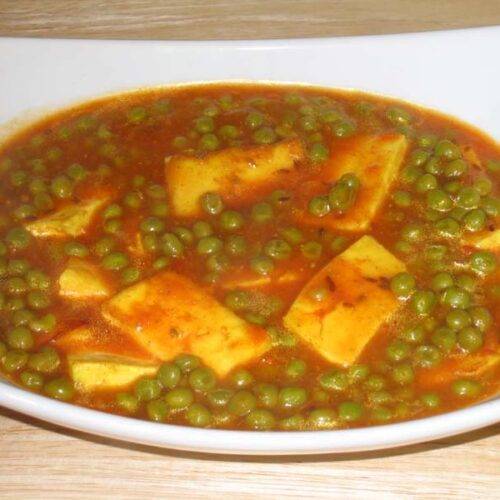Sorghum Jowar Dosa
Ingredients
- ½ cup sorghum Jowar flour
- ¼ cup rice flour Chawal ka atta
- ½ tsp cumin seed jeera
- ⅛ tsp asafetida hing
- ¼ tsp salt
- ⅛ tsp crushed black pepper
- 1 Tbsp finely chopped cilantro hara dhania
- 1 ½ cup water
- 3 Tbsp of oil for cooking dosa
Instructions
- Mix all the dry ingredients together, sorghum flour ( Jowar), rice flour, cumin seeds, asafetida, salt, black pepper.
- Add water slowly to make a thin batter and avoiding any lumps. Batter should have pouring consistency like buttermilk. Let the batter stand for about 30 minutes.
- Before making dosa add cilantro. Mix it well.
- Heat the skillet on medium high. To check if the skillet is ready sprinkle a few drops of water over the skillet water should sizzle. Wipe the skillet with few drops of oil.
- Pour the batter with a ladle, keep the ladle about 4 inches high from the skillet in a circular motion starting from the center. Keep pouring the batter till it is the size you will like the dosa. Notes: dosa will no be perfectly round.
- Do not try to spread the batter, Dosa should have holes like swiss cheese or have lacy look.
- Drizzle 1 teaspoon of oil around dosa.
- Cook Dosa over medium heat for about 2 minutes or until Dosa becomes golden brown. Turn the Dosa using spatula.
- Let Dosa cook for about 1 minute from another side. Dosa will be golden brown on one side and light color on other side. Thin and crispy Sorghum Dosa is ready to serve.
- Dosa has a look of Rava dosa but Sorghum Dosa is also gluten free and vegan.
Notes
How to make Instant Sorghum Dosa by Manjula’s Kitchen
Dosa is a popular south indian delicacy which looks like a crepe. It’s like a crisp and thin pancake made of rice and urad dal batter. Traditionally Dosa is served with sambar, aloo masala and coconut chutney. It is an Indian crepe made usually through rice batter, but here we have experimented and made many alternative dosa such as Oat Dosa, Besan Dosa, Rava Dosa, Sorghum Dosa. This preparation is using sorghum dosa and is a bread based breakfast recipe that is vegan. The preparation entails skillfully combining pan techniques and manual dexterity to achieve the perfect bread cooked on non-stick skillets.
1. Mixing Dry Ingredients: Crafting the Base for Jowar Dosa
Embark on the journey of creating an Instant Jowar Dosa by combining all the dry ingredients – sorghum flour (Jowar), rice flour, cumin seeds, asafetida, salt, and black pepper. This harmonious blend sets the foundation for a gluten-free and vegan dosa that promises a delightful culinary experience. Ensure the dry ingredients are well-integrated, setting the stage for the dosa batter.
2. Creating the Dosa Batter: Achieving the Perfect Consistency
Gradually add water to the dry mix, creating a thin batter with a pouring consistency akin to buttermilk. The key is to avoid any lumps, ensuring a smooth texture. Let the batter stand for approximately 30 minutes, allowing it to settle and develop optimal flavours. This patient step contributes to the success of your Jowar Dosa, enhancing its taste and texture.
3. Adding Cilantro: Elevating the Flavor Profile of Jowar Dosa
Before transforming the batter into dosas, introduce a burst of freshness by adding cilantro. This step not only enhances the flavor profile but also adds a visual appeal to your Jowar Dosa. Gently mix the cilantro into the batter, ensuring an even distribution of this aromatic herb.
4. Pouring and Cooking Dosa: The Art of Creating Jowar Dosa
Heat the skillet on medium-high, a crucial step before creating your Jowar Dosa. To test the skillet’s readiness, sprinkle a few drops of water – a sizzle should confirm its optimal temperature. Wipe the skillet with a few drops of oil, creating the perfect non-stick surface. With a ladle, pour the batter in a circular motion, starting from the centre, allowing the dosa to take shape naturally. Resist the urge to spread the batter, as Jowar Dosa is intended to have holes, resembling a swiss cheese or possessing a lacy appearance.
5. Drizzling Oil and Flipping Dosa: Achieving the Perfect Golden Brown
Enhance the crispiness and flavour by drizzling a teaspoon of oil around the dosa. Cook the Jowar Dosa over medium heat for about 2 minutes until it attains a golden brown hue. Using a spatula, gently flip the dosa, revealing a light colour on one side and the golden brown perfection on the other. This intricate dance of heat and ingredients results in a thin, crispy, and visually appealing Sorghum Dosa.
6. Serving Your Gluten-Free Creation: Enjoying the Instant Jowar Dosa
Your Instant Jowar Dosa, with its distinctive swiss cheese-like appearance, is now ready to grace your table. Savour the gluten-free and vegan goodness of this delectable creation. While reminiscent of Rava dosa in appearance, the uniqueness of Sorghum Dosa shines through. Thin, crispy, and utterly satisfying, this dosa promises a delightful culinary experience that caters to a diverse range of dietary preferences.

